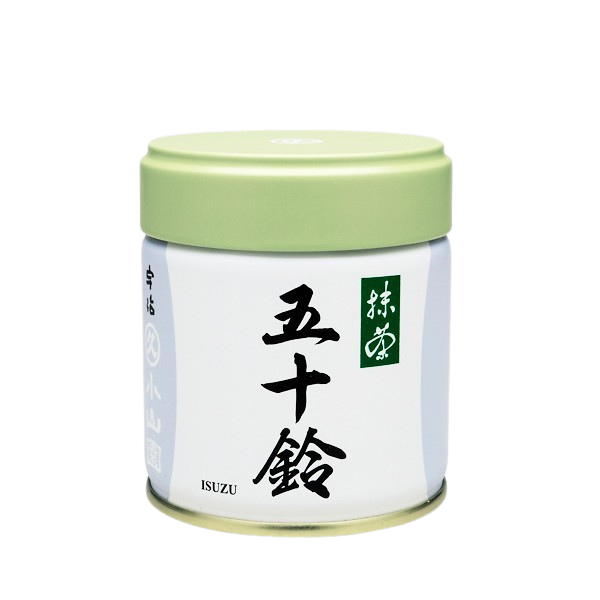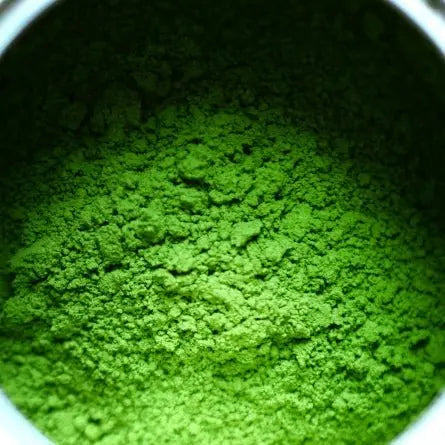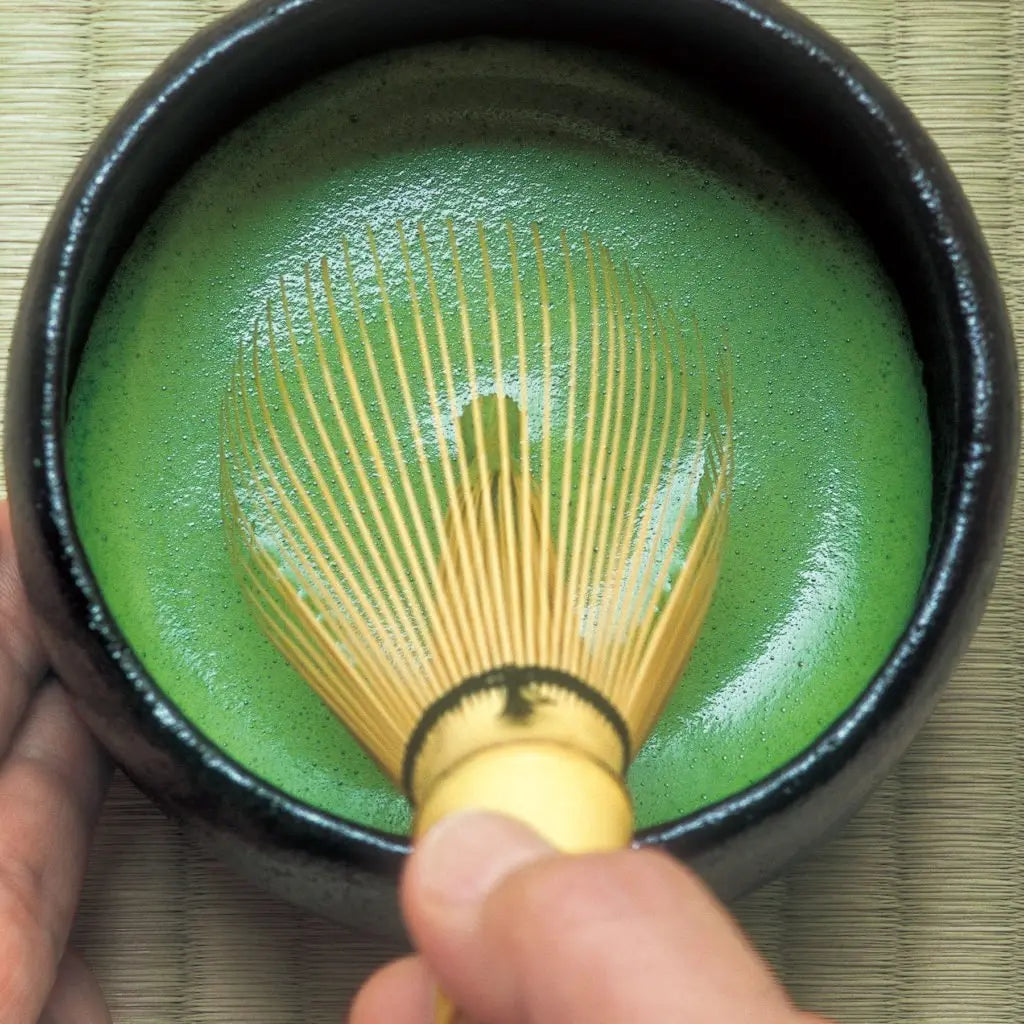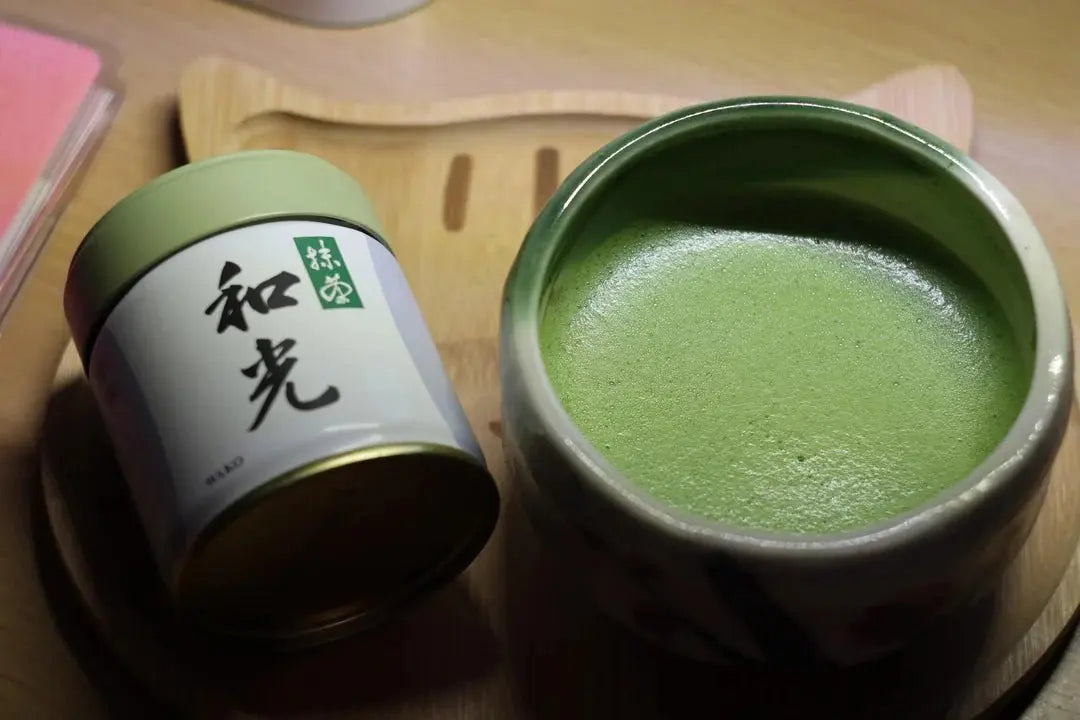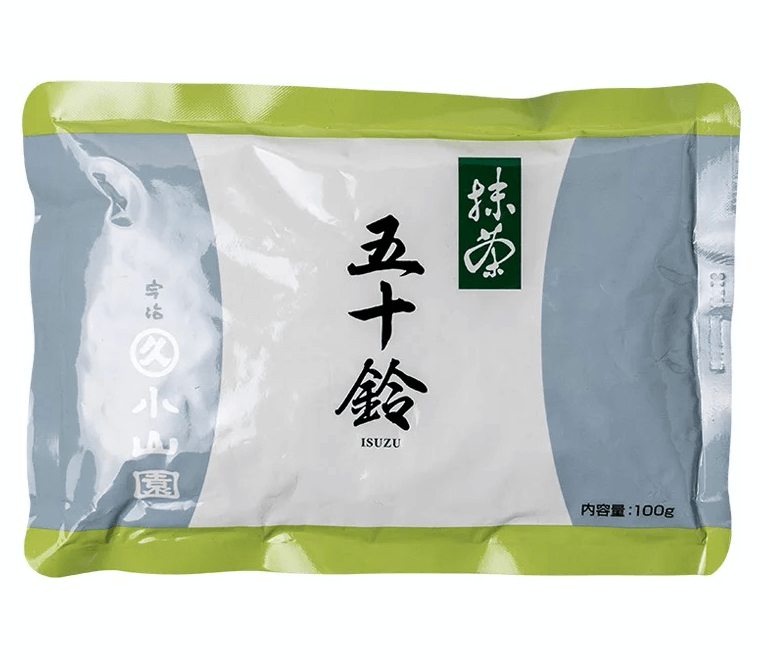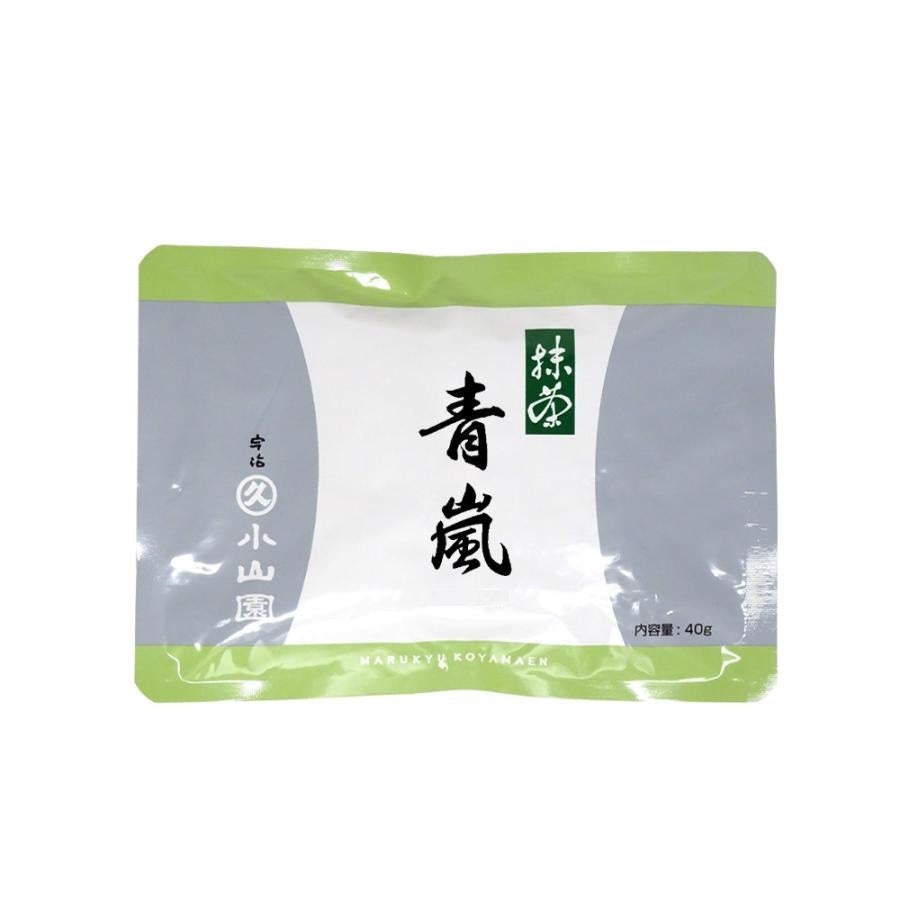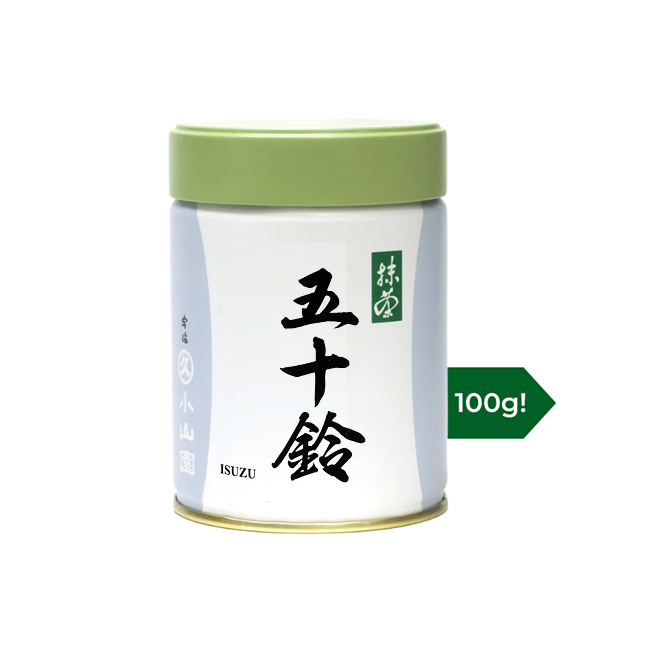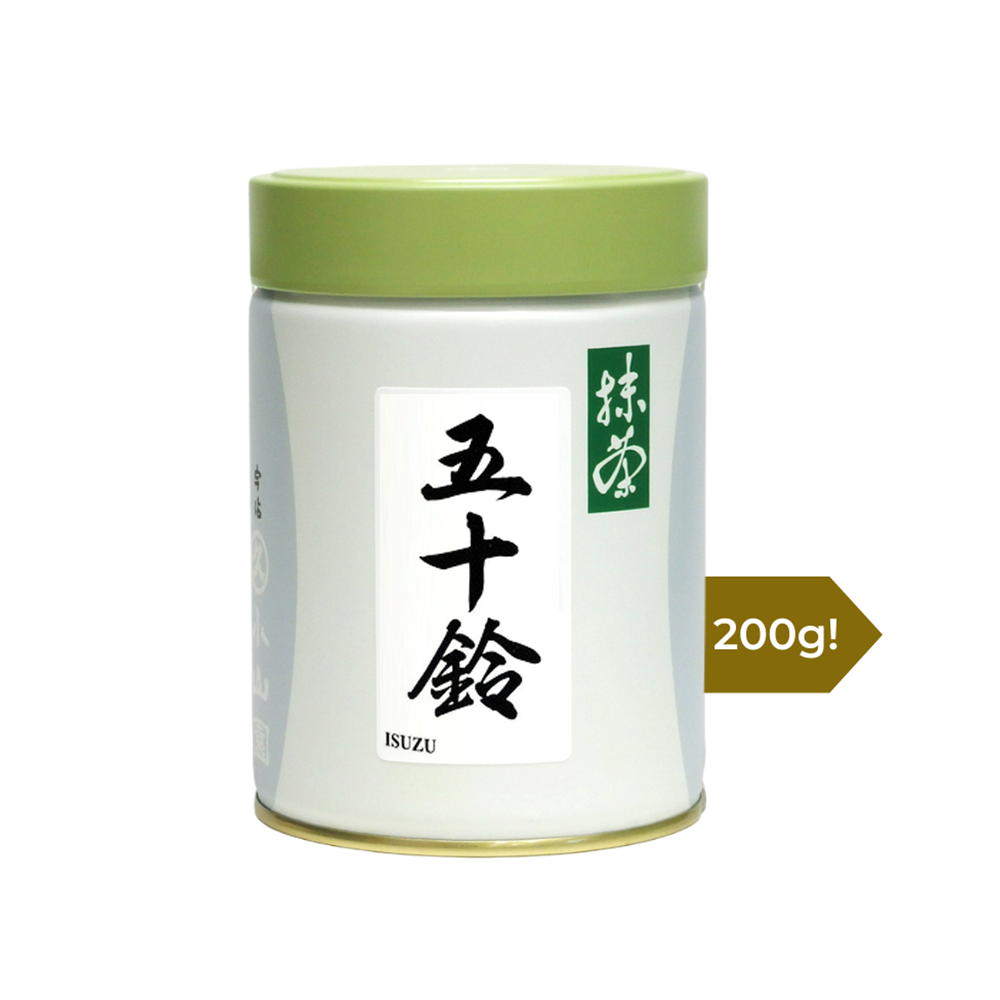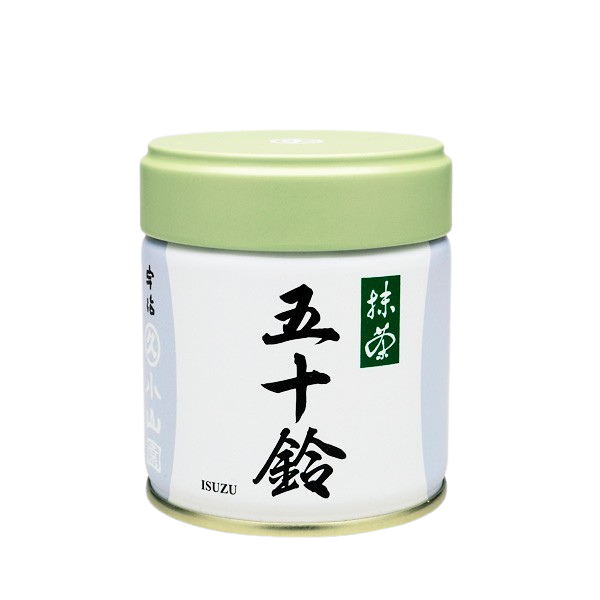
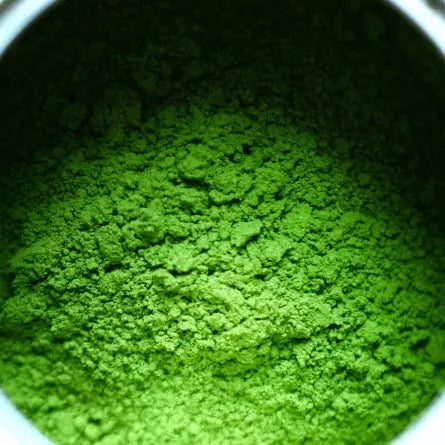
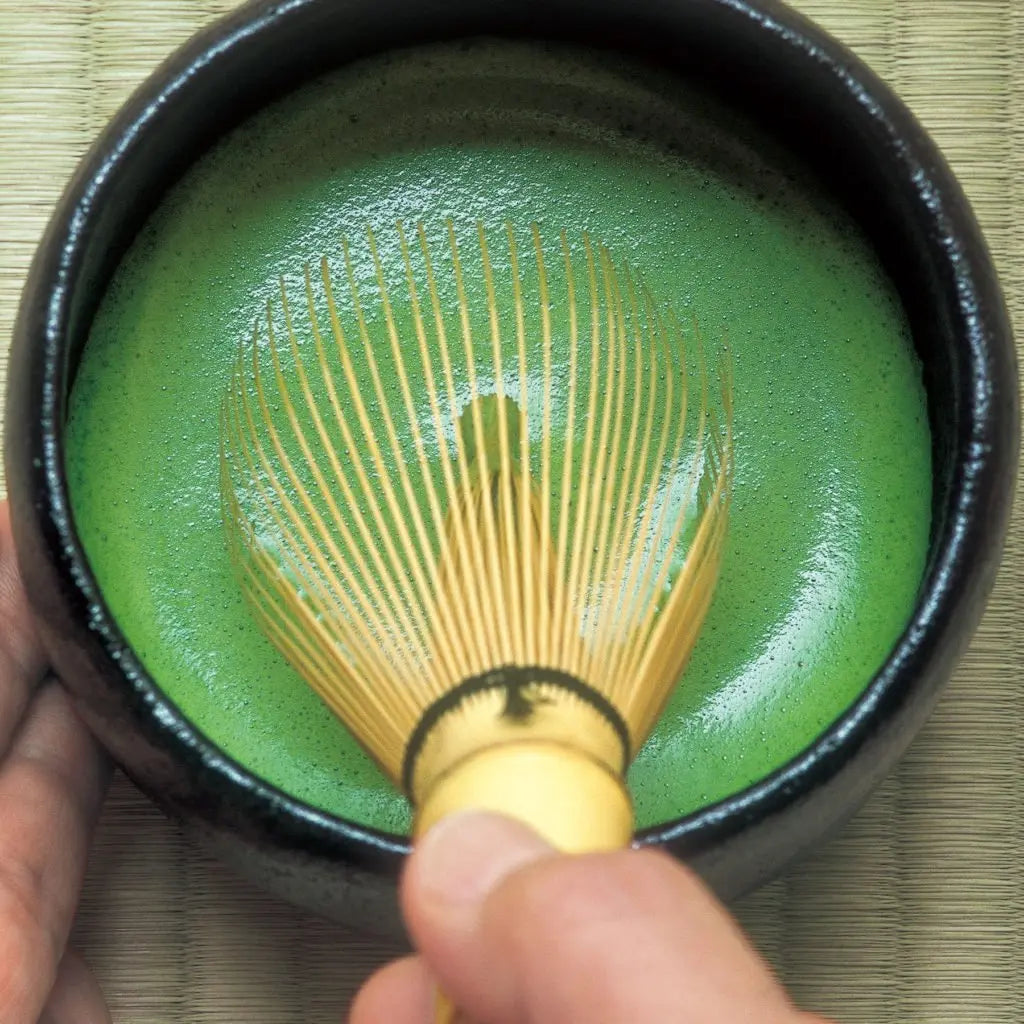
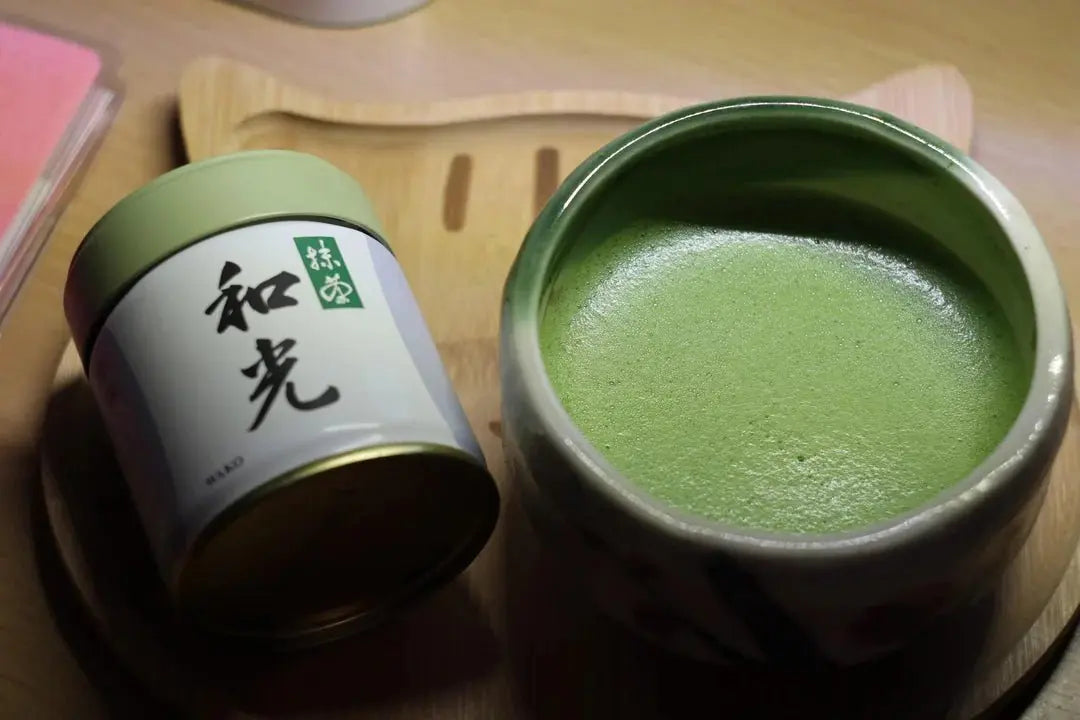
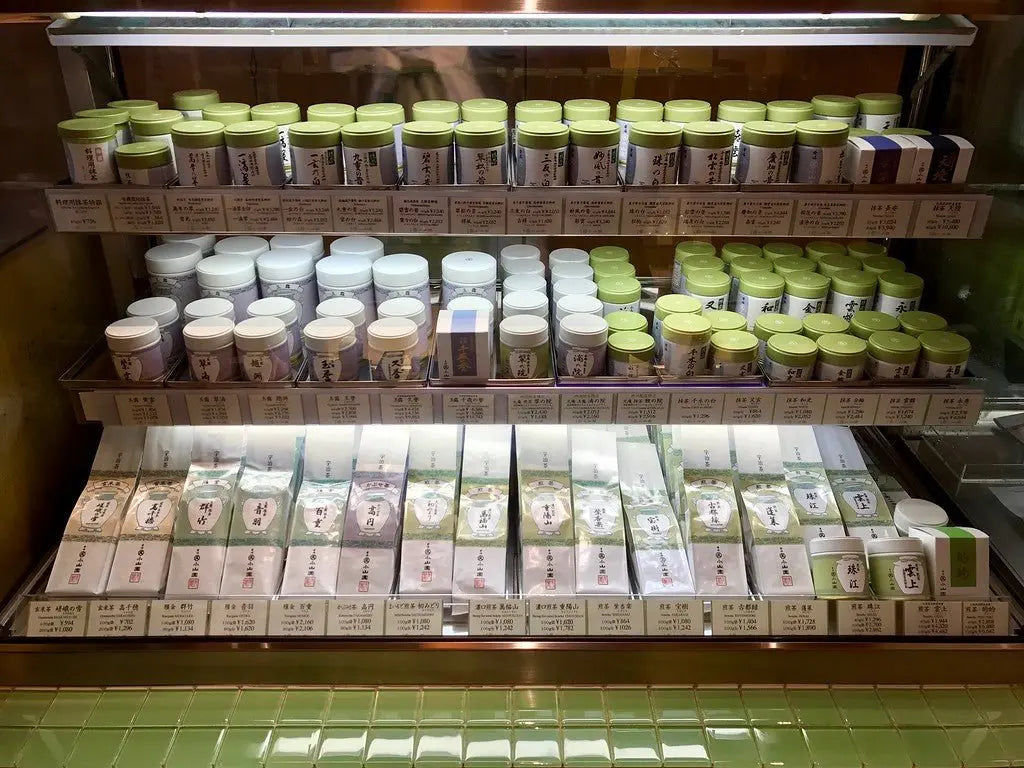
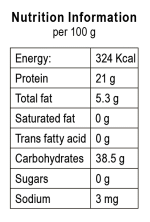
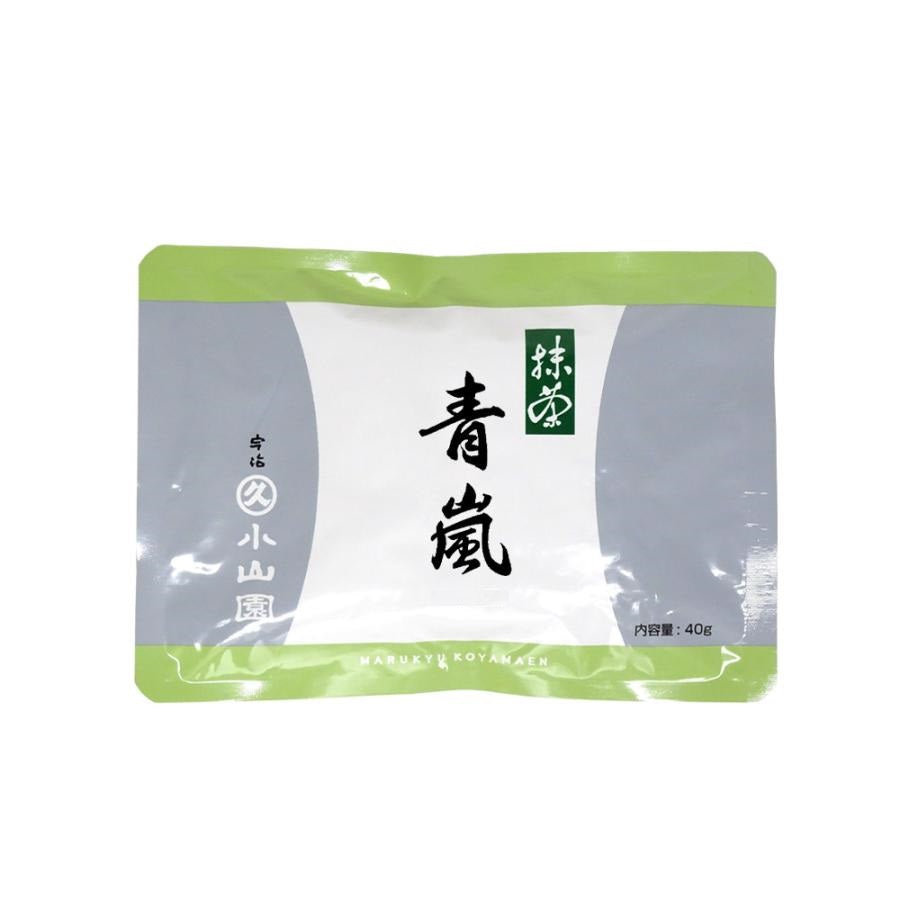
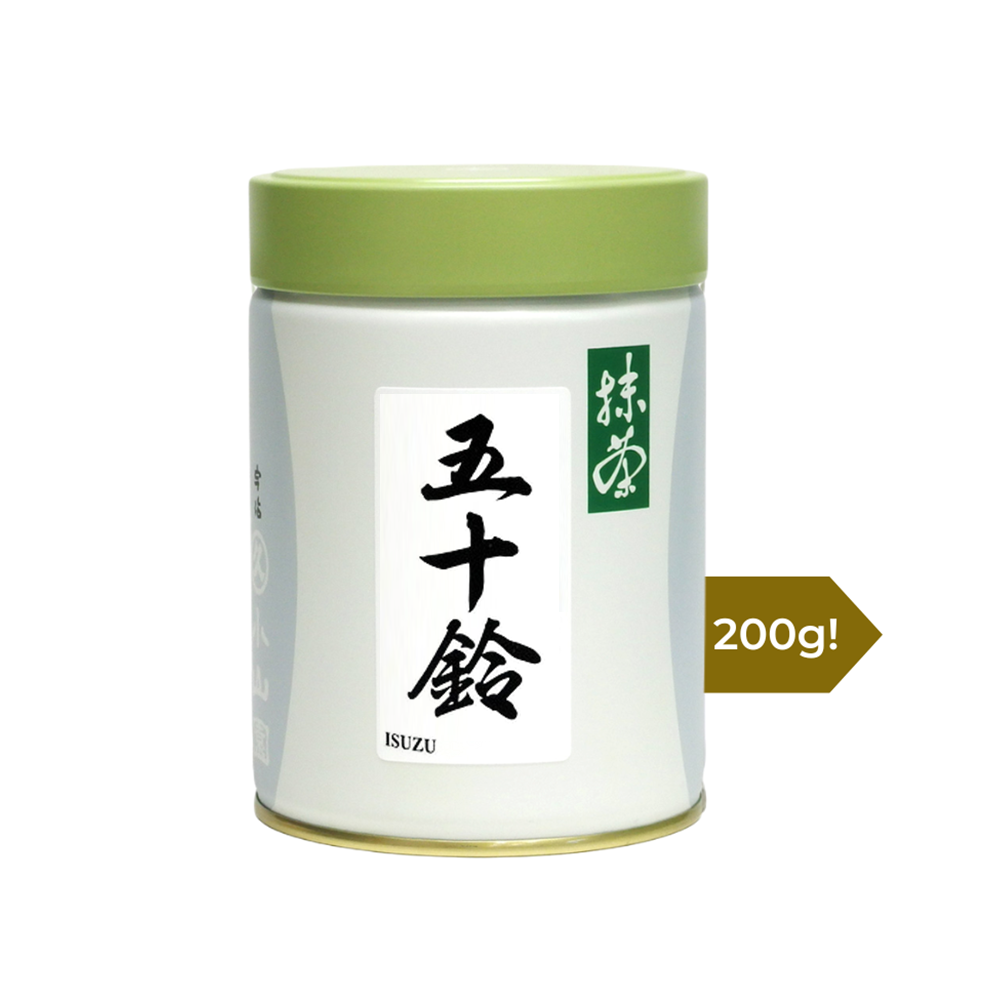
Couldn't load pickup availability
Flavour Profile:
More pronounced than Aoarashi, Isuzu has a sharp and acidic undertone and is rich in amino acids. When prepared with water at a lower temperature (70°C), the flavour softens significantly, reducing bitterness.
Origin of the Name:
Named after the Isuzu River near Ise Shrine, which is historically associated with purification and refreshment. The name was bestowed by the chief priest of Ise Shrine.
Usage:
Isuzu is versatile, enjoyable both hot and cold, and offers a unique taste experience.
Matcha Isuzu is produced by Marukyu Koyamaen, a company with over 300 years of expertise in cultivating and blending Japanese tea. Based in Uji, Kyoto, Marukyu Koyamaen is committed to maintaining the traditional taste of tea.
How is Matcha Isuzu made
Matcha Isuzu is produced by first shading the tea plants with reeds and straw. As the new leaves grow and seek sunlight, chlorophyll levels rise, turning the leaves bright green and soft. In early spring, the new growth is harvested and steamed. The raw tea is then dried and carefully stored. Freshly ground Matcha Isuzu is prepared as needed by removing stems and veins from the leaves and finely grinding them into a very fine powder using a stone mill.
How to make a hot matcha latte
How to make usucha (thin matcha)
How to store Matcha Isuzu
Store Matcha Isuzu in a dark, cool place away from light, heat, and humidity. Ensure the container is tightly sealed after opening to keep the tea fresh.
Ingredients: 100% Japanese green tea
Origin: Kyoto, Japan
